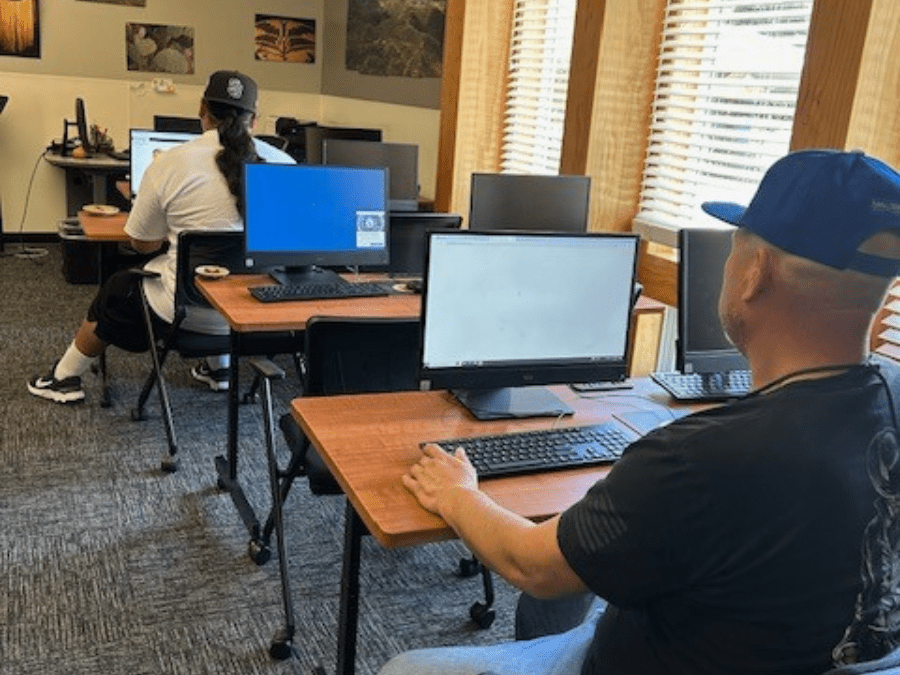147 years ago last month, Alexander Graham Bell received the patent for his invention, the telephone, and our company was born.
What has come since is a series of firsts in innovation and connection: the first phone call, the first transistor, the first communications satellite, the first fiber optic cable.
Yet, all those firsts were grounded in one thing: Building and operating the technology to improve the lives of our customers, friends, families and communities.
These are the innovations that drive the future and are critical to everyone – regardless of their zip code. I grew up in North Dakota – one of the least densely populated states in America. Phones and technology are how we closed the miles between our family, friends and opportunity. And this is increasingly the case for rural communities like the one I grew up in with each new innovation.
Whether its neighboring school districts being able to share a teacher through distance learning to bring students more class options or broadening a customer base for farmers and other small businesses like my dad – innovating for the future, especially when it comes to connectivity, matters.
Today, Alexander Graham Bell would be amazed to see how his invention and innovation have changed our world. We’re experiencing momentum unlike any we’ve seen before, driven by consumer and business demand for more connectivity.
- Between 2000 and 2021, the number of U.S. adults using the internet increased by 41%.1
This demand, coupled with rapid innovation cycles, continues to propel us forward – making investment in future-proof technologies today all the more essential.
As we reflect on the past 147 years and turn an eye toward the future, one word stands out to me: connectivity. Throughout my time at AT&T, it’s a word that has both completely defined and purposefully ignited my career and its trajectory.
Now, as AT&T’s President of Broadband Initiatives, my team is taking a more focused, strategic, state-by-state approach to our fiber investment initiatives.
- We’re positioning ourselves to ensure AT&T is offering not only the best possible product for our customers, but also managing costs and ensuring an optimal return on its investments.
Because fiber is our foundation. In fact, we have so much fiber that you could stretch it to the moon and back 3 times. And all that fiber adds up, making us the nation’s largest fiber internet provider, with the infrastructure in place to make us the most cost-effective choice when it comes to creating connections for the future.2
This year, state policymakers may find themselves facing similar, simultaneous challenges – ensuring their state broadband plans make fiscal sense and have the greatest impact.
As the National Telecommunications & Information Administration (NTIA) gears up to allocate Broadband Equity, Access & Deployment (BEAD) Program funds this summer, I’m eager to help ensure our engagement with states aligns with the best possible approach for connecting more Americans – whether it be small business owners like my father, a child with a dream like Los Angeles Clippers point guard James Preston, or the families who work across rural America to provide valuable resources for the rest of the country.
- That means being a resource as states assess their broadband access, affordability and adoption needs. And as they develop strategies, goals and initial measures on how to meet those needs.
One thing is certain: For us to close the gap between those served by high-speed broadband and those without, we need an all-hands-on-deck approach. As states develop their 5-year action plans and prepare to take advantage of BEAD, here are a few things we’ve learned during our 147 years in the connectivity business:
- Encourage participation. Program rules that encourage broad Internet Service Provider (ISP) participation will drive BEAD success.
- Engage local leaders. Program rules that reflect the input of communities – big and small – will be critical to addressing your state’s connectivity needs.
- Prioritize flexibility. Program rules that give ISPs flexibility to identify project areas to include a mix of unserved and underserved locations will allow for the most efficient use of limited funds.
- Stay focused. Program requirements that try to solve for policy goals beyond BEAD’s primary purpose can inadvertently drive up program costs, chilling ISP participation. Framing programs holistically and without onerous requirements will help ensure broad participation by many types of ISPs.
- Recognize value of proven experience. Program rules that recognize the importance of solid track records building broadband networks.
- Employ reasonable cost thresholds. Program rules that avoid setting high-cost thresholds unreasonably low will allow future-proof technologies to extend to as many locations as possible.
Working together, we have the opportunity to accomplish the goals we’ve set to bring more connectivity to more Americans – flexibly, responsibly and through strong collaboration.
1 Demographics of Internet and Home Broadband Usage in the United States | Pew Research Center
2 Based on the number of fiber to the home households using publicly available data.




